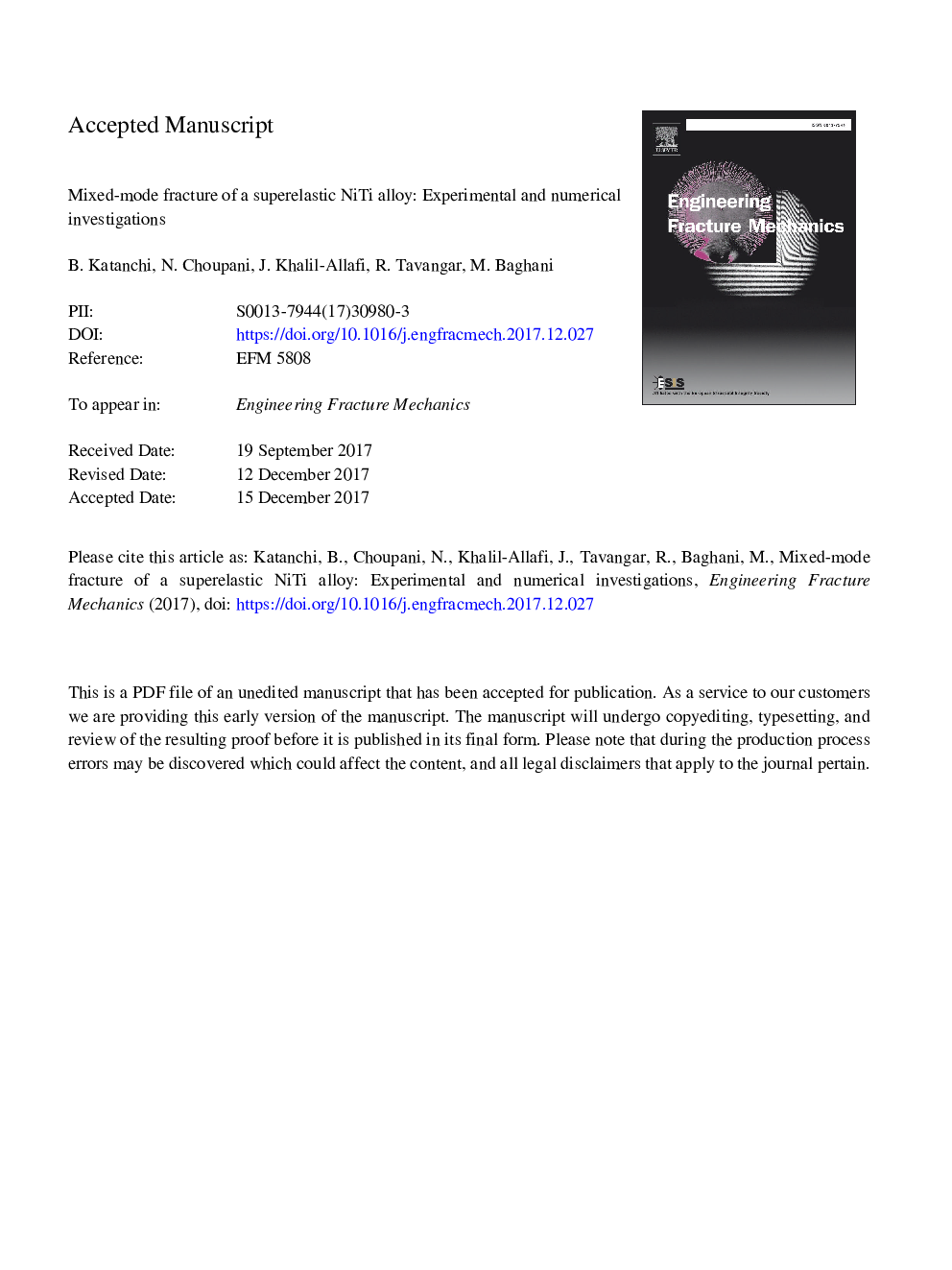| Article ID | Journal | Published Year | Pages | File Type |
|---|---|---|---|---|
| 7169091 | Engineering Fracture Mechanics | 2018 | 29 Pages |
Abstract
The evolution of mixed-mode fracture in a superelastic NiTi (50.8â¯at.% Ni) was experimentally investigated by using a specific loading fixture. The NiTi alloy was fabricated using vacuum arc re-melting method and characterized by using differential scanning calorimetry, X-ray diffraction and tensile tests. Fracture tests were performed according to the ASTM standard E399. The butterfly-shaped specimens were used for conducting the mixed-mode fracture experiments and the fracture toughness parameters were obtained in the range of mode-I to mode-II by interchanging the loading angle from 0° to 90°. Also, in order to validate the fixture performance, the results in mode-I were compared with a standard compact tension (CT) specimen. Finite element implementation was carried out by using a user subroutine (UMAT) according to Boyd-Lagoudas phenomenological model and stress intensity factors were calculated by using well-known Linear Elastic Fracture Mechanics (LEFM) formulation. The results of mixed-mode fracture test revealed that the cracked specimen is tougher in mode-I loading compared with mode-II loading conditions. Finally, the fracture surfaces obtained at different mixed-mode loading conditions were investigated by using scanning electron microscopy (SEM) technique to gain a closer look into the failure mechanisms.
Related Topics
Physical Sciences and Engineering
Engineering
Mechanical Engineering
Authors
B. Katanchi, N. Choupani, J. Khalil-Allafi, R. Tavangar, M. Baghani,
